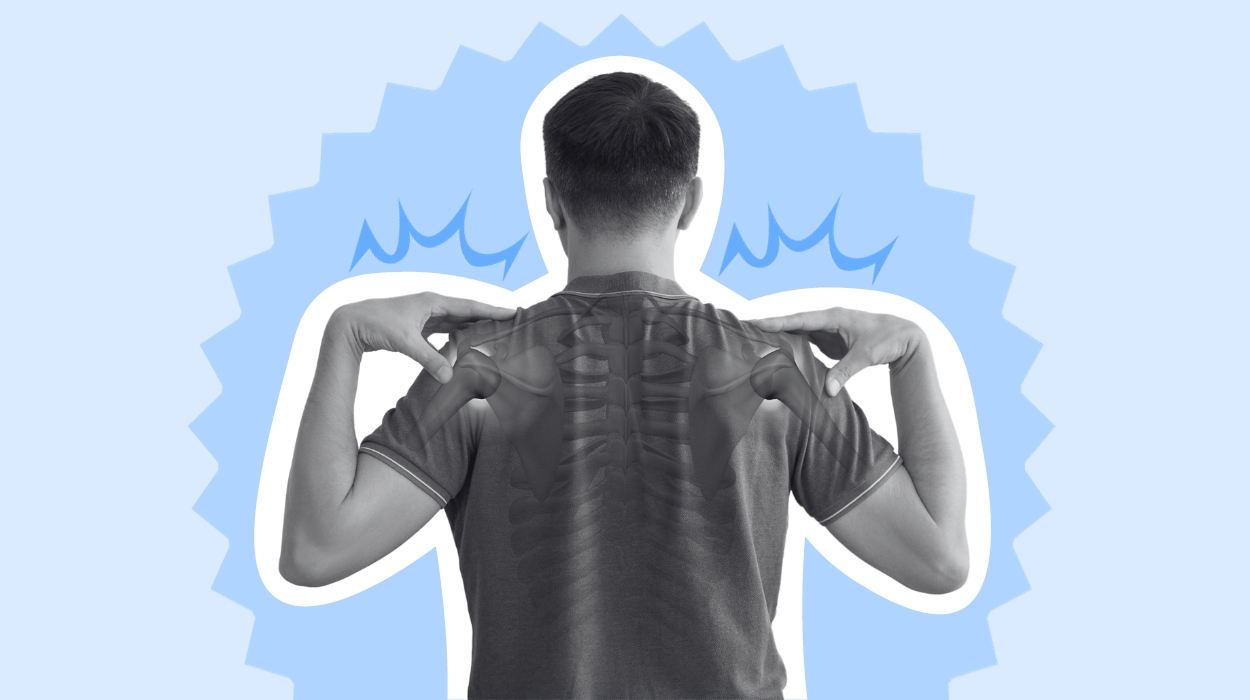A well-defined upper body with broad shoulders is often considered a symbol of strength and masculinity. Men desire wider shoulders, not only for their aesthetic appeal but also for the numerous benefits they offer. Achieving wider shoulders may seem like an impossible task, but, with the right knowledge and dedication, anyone can transform their shoulder width.
This article will explore why men want broader shoulders, the possibility of achieving muscular shoulders, and the exercises on how to get wider shoulders.
6 Effective Exercises On How To Get Broad Shoulders
- Dumbbell Lateral Raise.
- Bent Over Reverse Cable Fly.
- Bent Arm Lateral Raise.
- Reverse Dumbbell/Band Fly.
- Leaning Lateral Raise.
- High Cable Reverse Fly.
How To Get Wider Shoulders In 2024
There are many different exercises that you can use to target your shoulder muscles and achieve a wider look. Always stretch and warm up your muscles before any workout, and consult with your healthcare provider before starting a new workout regimen.
Dumbbell Lateral Raise
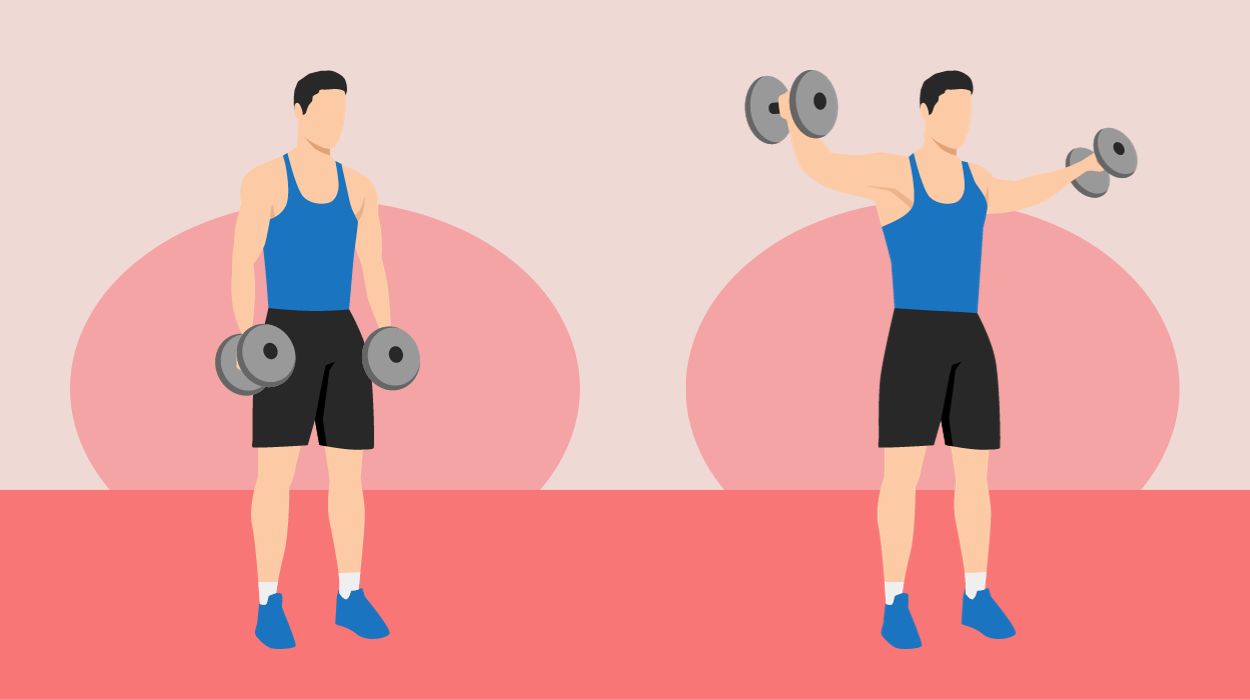
If you’re wondering how to get broader shoulders with dumbbells, Dumbbell lateral raises are a highly effective exercise. This exercise focuses on targeting the side deltoid muscles,[1] also known as “delts,” which play a crucial role in shoulder width.
How to do:
- Stand with your feet shoulder-width apart and hold a dumbbell in each hand, palms facing your body.
- Start with the dumbbells by your sides and slowly raise them to the sides, keeping your arms straight and your core engaged.
- Pause briefly at the top and lower the dumbbells back to the starting position.
- Repeat for the desired number of repetitions.
Tips:
- Use a controlled motion to lift the dumbbells to shoulder height, keeping a slight bend in your elbows to minimize strain on your joints.
- Avoid swinging your body, maintain proper posture, and engage your core to isolate the lateral deltoids.
- Use a weight that challenges you and gradually increase the weight as you progress to continue building strength and shoulder definition.
Optimal Sets and Reps: 3 sets of 10-12 reps.
Bent Over Reverse Cable Fly
The bent-over reverse cable fly primarily targets the rear delts,[2] contributing to a wider, more defined shoulder appearance.
How to do:
- Begin by setting the cable pulleys at waist height and stand in the middle, facing away from the machine.
- Hold the handles with an overhand grip and bend forward at the waist, keeping your back straight.
- With your arms slightly bent, pull the handles back and out to the sides, squeezing your shoulder blades together.
- Slowly return to the starting position and repeat for the desired number of repetitions.
Tips:
- Maintain a slight bend in your knees and hinge at your hips to lean forward, keeping your back straight to effectively target your rear deltoids and upper back.
- Focus on squeezing your shoulder blades together at the peak of the movement to engage your rear deltoids and improve posture.
- Use a weight that challenges you while maintaining proper form to build upper back strength and definition.
Optimal Sets and Reps: 3 sets of 12-15 reps.
Bent Arm Lateral Raise
The bent arm lateral raise is an excellent exercise for targeting the posterior deltoids,[3] contributing to shoulder width and overall development.
How to do:
- Start by standing with your feet shoulder-width apart and holding a dumbbell in each hand, palms facing your body.
- Bend your elbows at a 90-degree angle with the dumbbells positioned in front of your chest.
- Keeping your core engaged, raise the dumbbells out to the sides until they reach shoulder height.
- Pause briefly and then slowly lower the dumbbells back to the starting position.
- Repeat for the desired number of repetitions.
Tips:
- Maintain a slight bend in your knees and hips while keeping your back straight, engaging your core for stability.
- Lift your elbows out to the sides, keeping a 90-degree bend in your arms, and focus on squeezing your lateral deltoids at the top of the movement.
- Perform with a weight that challenges you without sacrificing proper form, which will help you develop well-rounded shoulder muscles and improve shoulder stability.
Optimal Sets and Reps: 3 sets of 10-12 reps.
Reverse Dumbbell/Band Fly
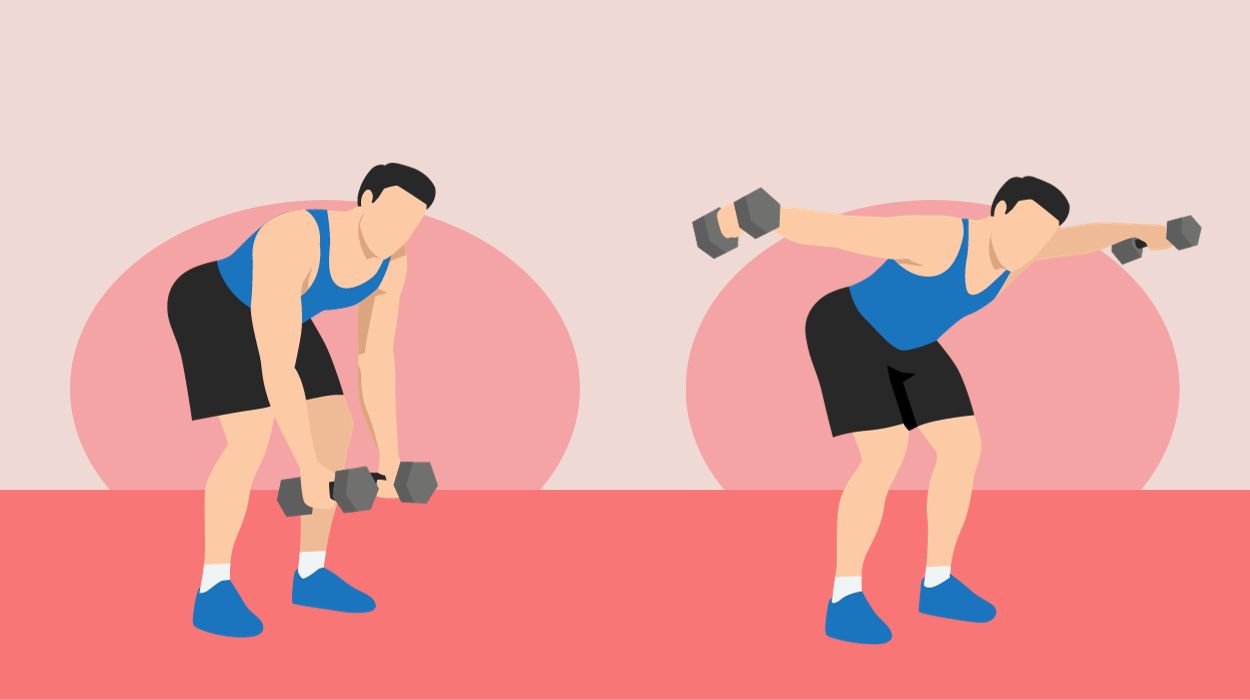
The reverse dumbbell fly is an excellent exercise for targeting the rear delts,[4] which play a significant role in achieving broader shoulders.
How to do:
- Begin by standing with your feet hip-width apart and holding a dumbbell in each hand.
- Hinge forward at the hips, maintaining a slight bend in your knees and keeping your back straight.
- With your palms facing each other, raise your arms out to the sides, squeezing your shoulder blades together.
- Pause briefly at the top and then slowly lower the dumbbells back to the starting position.
- Repeat for the desired number of repetitions.
Tips:
- Maintain a slight bend in your knees and hinge at your hips to lean forward, keeping your back straight to target your rear deltoids effectively.
- Focus on squeezing your shoulder blades together as you lift the dumbbells out to the sides, engaging your upper back muscles.
- Perform with controlled movements and a weight that challenges you while allowing proper form the gradually increase the weight.
- You can also effectively perform this exercise using elastic bands if needed by standing on the bands and performing the exercise as described.
Optimal Sets and Reps: 3 sets of 10-12 reps.
Leaning Lateral Raise
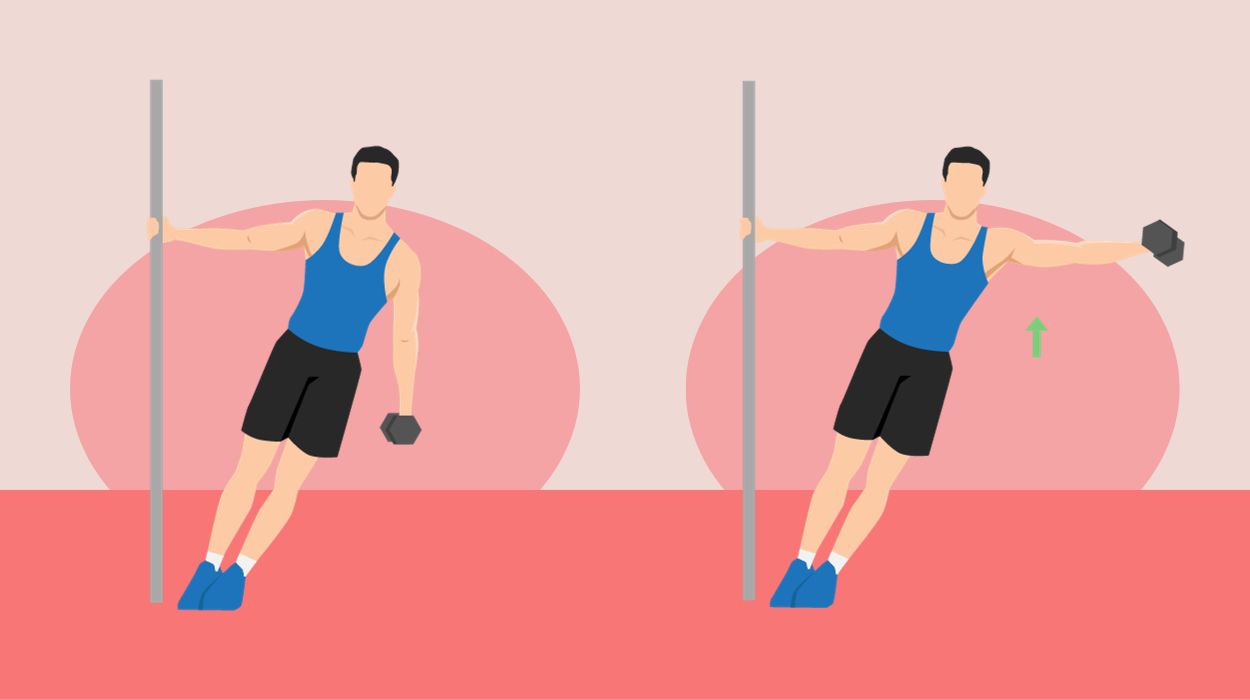
The leaning lateral raise is a variation of the typical dumbbell lateral raise that places more emphasis on the side delts, helping to widen the shoulders.
How to do:
- Stand with your feet shoulder-width apart and hold a dumbbell in each hand, palms facing your body.
- Lean slightly to one side, away from the dumbbell in your hand.
- Keeping your core engaged, raise the dumbbell out to the side until it reaches shoulder height.
- Pause briefly and then slowly lower the dumbbell back to the starting position.
- Repeat on the other side.
- Repeat for the desired number of repetitions.
Tips:
- Stand with your feet shoulder-width apart and maintain a slight lean to the opposite side of the working arm to target your lateral deltoids effectively.
- Keep a slight bend in your elbow as you lift the dumbbell, leading with your elbow, and focus on squeezing your lateral deltoid at the top of the movement.
- Perform with a weight that challenges you without compromising your form.
Optimal Sets and Reps: 3 sets of 12-15 reps on each side.
High Cable Reverse Fly
The high cable reverse fly effectively targets the rear delts, contributing to wider shoulders.
How to do:
- Begin by setting the cable pulleys at the highest position and stand in the middle, facing away from the machine.
- Hold the handles with an overhand grip and step forward, allowing tension on the cables.
- With your arms slightly bent, pull the handles back and out to the sides, squeezing your shoulder blades together.
- Slowly return to the starting position and repeat.
- Repeat for the desired number of repetitions.
Tips:
- Stand facing the cable machine with a staggered stance for stability, and keep your chest slightly up.
- Focus on squeezing your shoulder blades together as you pull the cables apart and slightly downward to engage your upper back muscles.
- Perform with a weight that challenges you.
- Maintain proper form to avoid injury and maximize the benefits of this exercise for your upper back and shoulder development.
Optimal Sets and Reps: 3 sets of 10-12 reps.
Why Do Men Want Wider Shoulders?
Many men aspire for broader shoulders to achieve different aesthetic and athletic purposes. First, wider shoulders create an illusion of a lean waist, making the overall physique appear more proportionate and attractive.
Additionally, broad shoulders enhance the taper to a narrower waist, giving a V-shape, which can be seen as a more masculine and powerful look.
Furthermore, having well-developed shoulder muscles increases upper body strength and improves athletic performance.
Overall, wider shoulders enhance one’s physical appearance and offer various athletic advantages.
Is It Possible To Get Wider Shoulders?
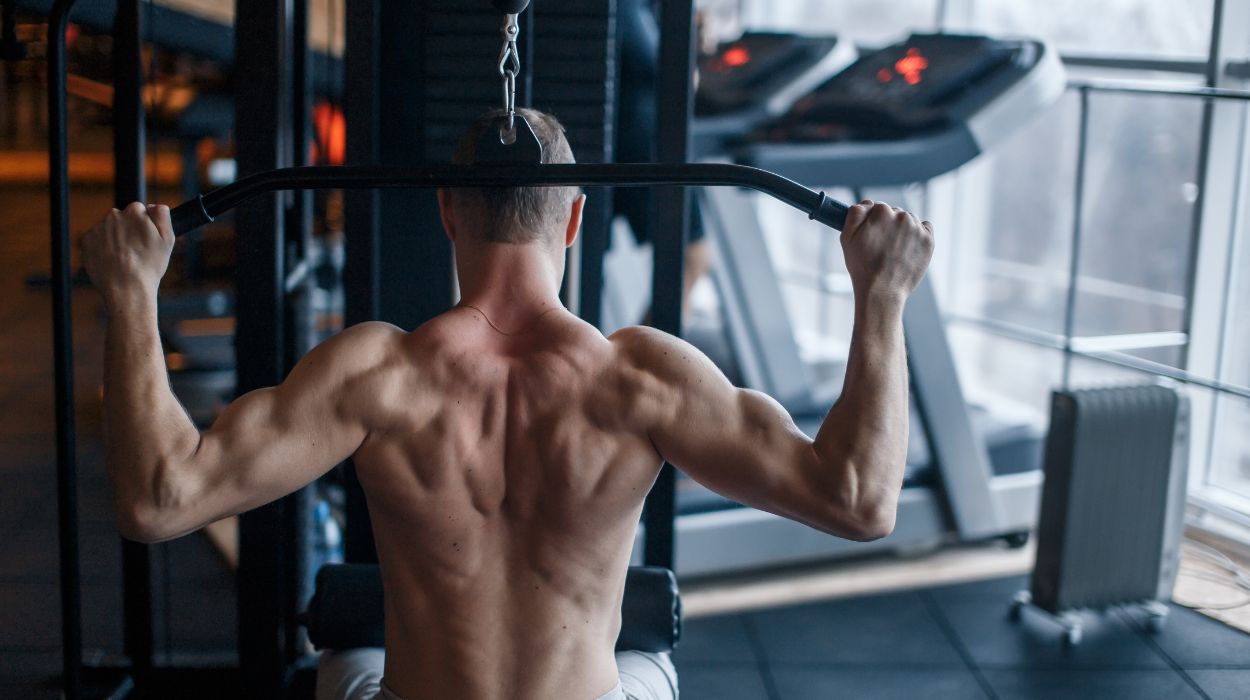
The answer is a resounding yes! While genetics play a role[5] in determining one’s natural shoulder width, enhancing and developing the shoulder muscles[6] through targeted exercises is possible.
You might also wonder how to widen shoulders without weights — however, utilizing weight training provides a more effective method for the muscle growth needed to get wider shoulders.
Following a consistent workout routine and focusing on the shoulder muscles can transform your shoulder width and achieve a broader, more impressive look. It is important to note that the process requires dedication, patience, and adherence to proper form and technique.
With the right approach, anyone can unlock the secrets to wider shoulders.
Benefits Of Wide Shoulders
Achieving wider shoulders offers numerous benefits beyond a more impressive physique.
First, developed muscles in the shoulders improve posture by pulling the shoulders back and aligning the spine properly. This helps alleviate common issues such as hunching and rounded shoulders.[7]
Second, building lean upper body muscle provides better support for the upper body, reducing the risk of injuries[8] during physical activities and weightlifting. Additionally, broader shoulders enhance upper body strength and power, improving performance in sports and other physical endeavors.
Finally, wider shoulders contribute to a balanced and attractive physique, boosting confidence and self-esteem.
How Long To Get The Ideal Shoulder?
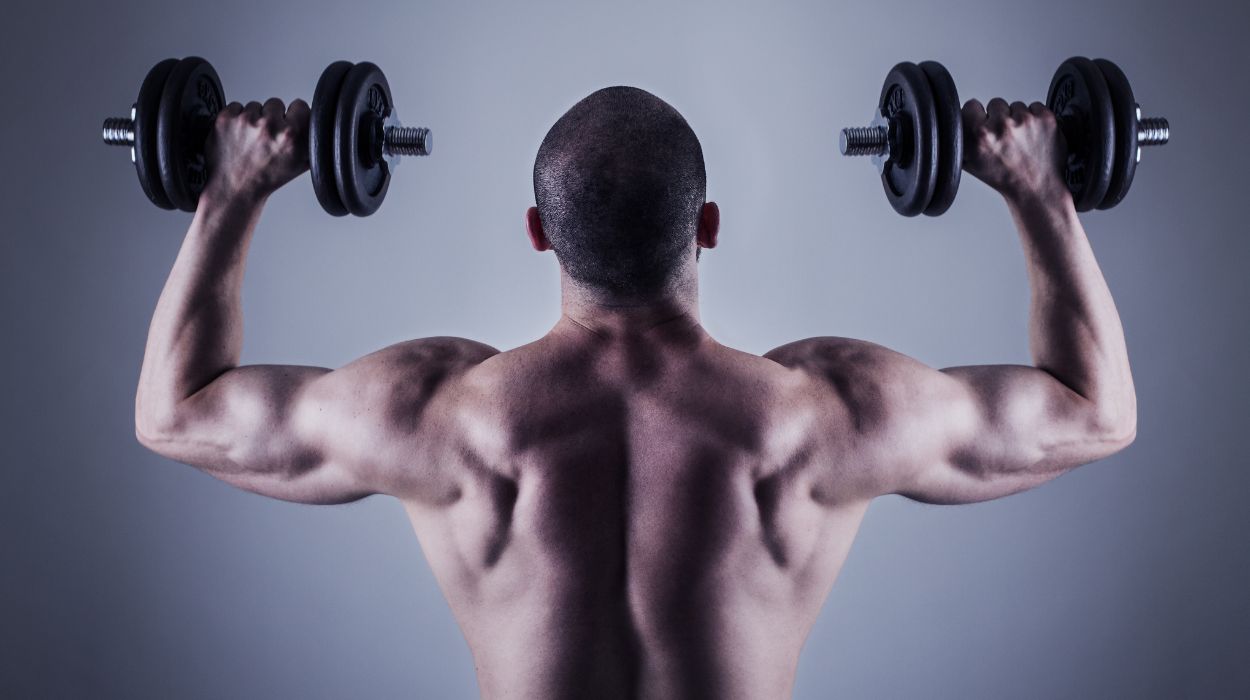
You likely want to know how to get wide shoulders fast, but the time it takes to achieve wider shoulders varies depending on several factors. Genetics, current shoulder width, consistency in training, and diet all play a role in how long it takes to get wider shoulders. Exercise plays a crucial role in building shoulder width, but diet also plays an important role in muscle growth.[9] Ensure you’re consuming adequate lean protein to help your body build lean muscle mass.
While it is difficult to provide an exact timeframe, it is essential to remember that significant changes in shoulder width require consistent effort over an extended period. With a dedicated workout routine, focusing on the shoulder muscles and proper nutrition, one can start noticing visible changes in shoulder width within a few months.
However, it is crucial to remain patient and persistent, as the journey to broader shoulders is a gradual process that requires time and commitment.
Conclusion
Wider shoulders are not an unattainable dream but rather a goal you can achieve with the right approach and dedication. Anyone can transform their shoulder width and achieve a more impressive upper body through targeted exercises that engage the shoulder muscles, such as lateral raises and reverse flies.
The benefits of wider shoulders extend beyond aesthetics, improving posture, providing better support, and enhancing overall strength and performance. Remember to stay consistent, maintain proper form, and give yourself time to progress.
With patience and determination, you can unlock the secrets to impressive shoulders and enjoy the rewards of a broader and more powerful upper body.
Frequently Asked Questions
Researchers recommend you perform shoulder exercises at least two to three times a week[10] to achieve wider shoulders. This frequency allows for proper muscle recovery and growth.
Absolutely! While women may have different aesthetic goals, shoulder exercises can help strengthen and tone the shoulder muscles, enhancing upper body strength and posture.
The weight used for shoulder exercises should be challenging enough to stimulate muscle growth but not so heavy that it compromises proper form. Finding a weight that allows you to perform the exercises with the correct technique and without straining or risking injury is essential.
Yes, it is possible to get broader shoulders even while losing weight. Combining a calorie deficit for weight loss, consuming lean sources of protein, and targeted shoulder exercises, can help you develop and widen your shoulder muscles while shedding excess body fat.
 Expert's opinion
Expert's opinion